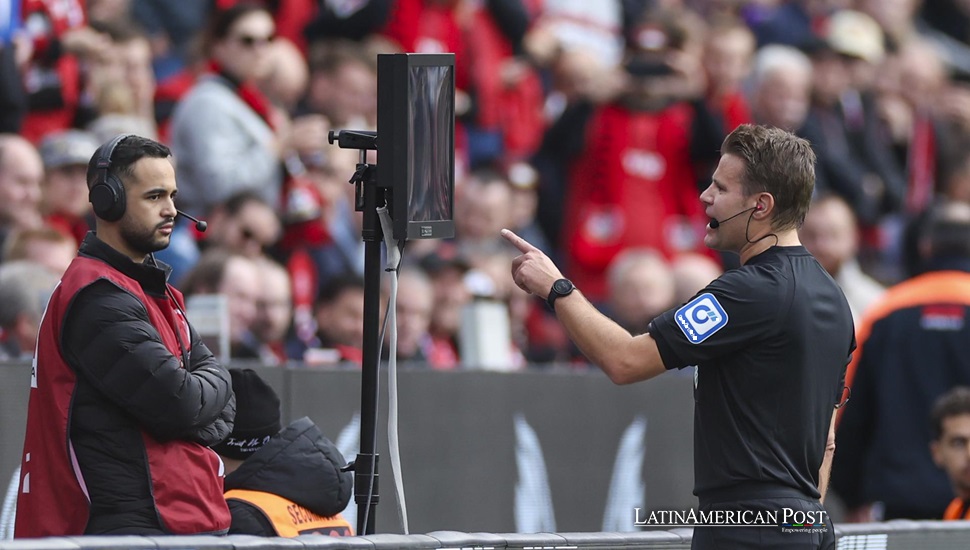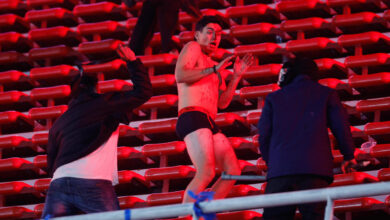How VAR Sponsorship Could Revolutionize Soccer Business in Latin America

As Video Assistant Referee (VAR) technology changes the face of soccer, it also opens a lucrative new revenue stream for brands. With millions of fans glued to screens during crucial VAR decisions, Latin America may soon see significant business opportunities emerge.
The Impact of VAR on Modern Soccer
The introduction of Video Assistant Referee (VAR) technology has transformed soccer, adding a layer of precision to critical on-field decisions. In Latin America, where soccer is more than just a sport, VAR has sparked praise and controversy. The system, designed to assist referees with decisions such as goals, penalties, and offside calls, has been adopted across top leagues around the world, including South America.
While VAR has improved the game’s accuracy, it has also fueled heated debates among fans and players. In stadiums and homes across the region, emotions run high during moments when VAR is consulted. These crucial seconds—filled with tension and anticipation—are not just about soccer; they represent a powerful new opportunity for brands to capitalize on one of the most watched and beloved sports in the world.
As millions of eyes turn to the screen during VAR reviews, the potential for brands to engage with this captive audience is enormous. Now, companies are beginning to realize that these moments, often filled with suspense, are perfect for reaching passionate fans, opening a commercial frontier that could change the business of soccer forever.
VAR Sponsorship: A New Goldmine for Brands
With the rise of VAR, a new business opportunity has emerged. Major soccer leagues in Europe, such as Italy’s Serie A, have already begun capitalizing on VAR sponsorship deals. For instance, in 2021, Serie A inked an agreement with Crypto.com to sponsor its VAR system, while Euro 2024 brought Chinese electronics giant Hisense into the fold as the official provider of VAR screens. These partnerships illustrate the growing appeal of associating with VAR, particularly for companies linked to technology, transparency, and precision.
The potential for VAR sponsorship is immense in Latin America, where soccer is deeply ingrained in the cultural fabric. A recent study by DataPowa, a sports sponsorship analytics firm, estimates that sponsoring VAR in Spain’s top soccer league could generate over 12 million euros in media value per season. The study analyzed matches where VAR played a pivotal role and found that each VAR decision resulted in an average of 42 seconds of on-screen brand exposure. When fans’ attention is sharply focused, these moments represent a goldmine for advertisers.
Brands slowly recognize that VAR moments—when millions of fans eagerly await the referee’s final call—are prime real estate for advertising. “It’s a moment of high tension, and there’s a lot of value in that,” says an expert in sports marketing, Eric Morera. “Brands that know how to seize this opportunity will stand to gain tremendously.”
For companies willing to align with transparency and innovation, VAR offers a unique chance to connect with soccer’s vast, emotionally invested audience. And as more leagues experiment with sponsorship deals, the commercialization of VAR could become the norm, offering new revenue streams for both leagues and brands.
What This Means for Latin America’s Soccer-Obsessed Nations
In Latin America, soccer is more than just a sport—it’s a way of life. Countries like Brazil, Argentina, and Mexico live and breathe the game, and the introduction of VAR has only intensified the drama on the field. While VAR has had its share of detractors, it has also brought a new level of scrutiny and excitement to the matches, especially in leagues like Argentina’s Primera División and Brazil’s Série A.
For brands looking to tap into the passion of Latin American soccer fans, VAR sponsorship could offer an unprecedented opportunity. Latin America is home to some of the most dedicated soccer fans in the world, and their attention is fully captured during VAR reviews. As soccer fans across the region argue about whether a goal should stand or if a penalty was rightfully given, these moments of suspense could become prime advertising space.
Latin America’s growing tech sector is well-positioned to benefit from these sponsorship opportunities. Companies in fields such as telecommunications, electronics, and digital innovation could align with VAR to promote transparency and precision—values that resonate strongly with consumers in the region. For example, Brazilian or Mexican tech companies could follow in the footsteps of Hisense or Iliad, leveraging VAR moments to showcase their technological expertise on a global stage.
Moreover, VAR sponsorship could fuel much-needed investment in Latin American soccer leagues, helping to boost their global profile and competitiveness. As leagues continue to adopt VAR, the influx of sponsorship dollars could drive improvements in stadium infrastructure, technology, and player development, ultimately elevating competition.
Opportunities and Challenges Ahead for VAR Sponsorship
As the concept of VAR sponsorship gains traction, Latin America’s soccer ecosystem stands at a crossroads. On the one hand, the commercial potential is undeniable. DataPowa’s analysis shows that VAR sponsorship offers brands high visibility and a chance to engage with a passionate audience. This represents a significant new revenue stream for leagues, which could be reinvested into improving the game across the region.
However, challenges remain. VAR has been a controversial addition to the game, with some fans feeling that it disrupts the flow of play or leads to inconsistent decision-making. Brands may be hesitant to associate themselves with a technology that, while innovative, is still divisive among fans. This hesitation has been observed in Europe, where brands initially shied away from VAR sponsorship due to its polarizing nature.
Nonetheless, Morera believes that brands have more to gain than lose by getting involved. “Fans pay attention when VAR is in play, whether they love or hate it,” he says. “The key is for brands to embrace the tension and capitalize on the attention.”
The challenge for Latin America’s soccer leagues will be to strike the right balance. As more leagues adopt VAR, they will need to ensure that the technology enhances the fans’ experience rather than detracting from it. If implemented well, VAR could improve the game’s fairness and provide a significant financial boost through sponsorship deals.
Also read: The Unbelievable Case of Uruguay’s $3 Million Gallstone Smuggling Ring
VAR has not only changed how soccer is played but also opened up a lucrative new world of sponsorship opportunities. For soccer-crazed Latin America, where the passion for the game runs deep, VAR sponsorship could revolutionize how brands connect with fans. As leagues, brands, and tech companies continue to explore these opportunities, VAR may become a central feature of the soccer economy, bringing innovation and financial growth to one of the world’s most beloved sports.





